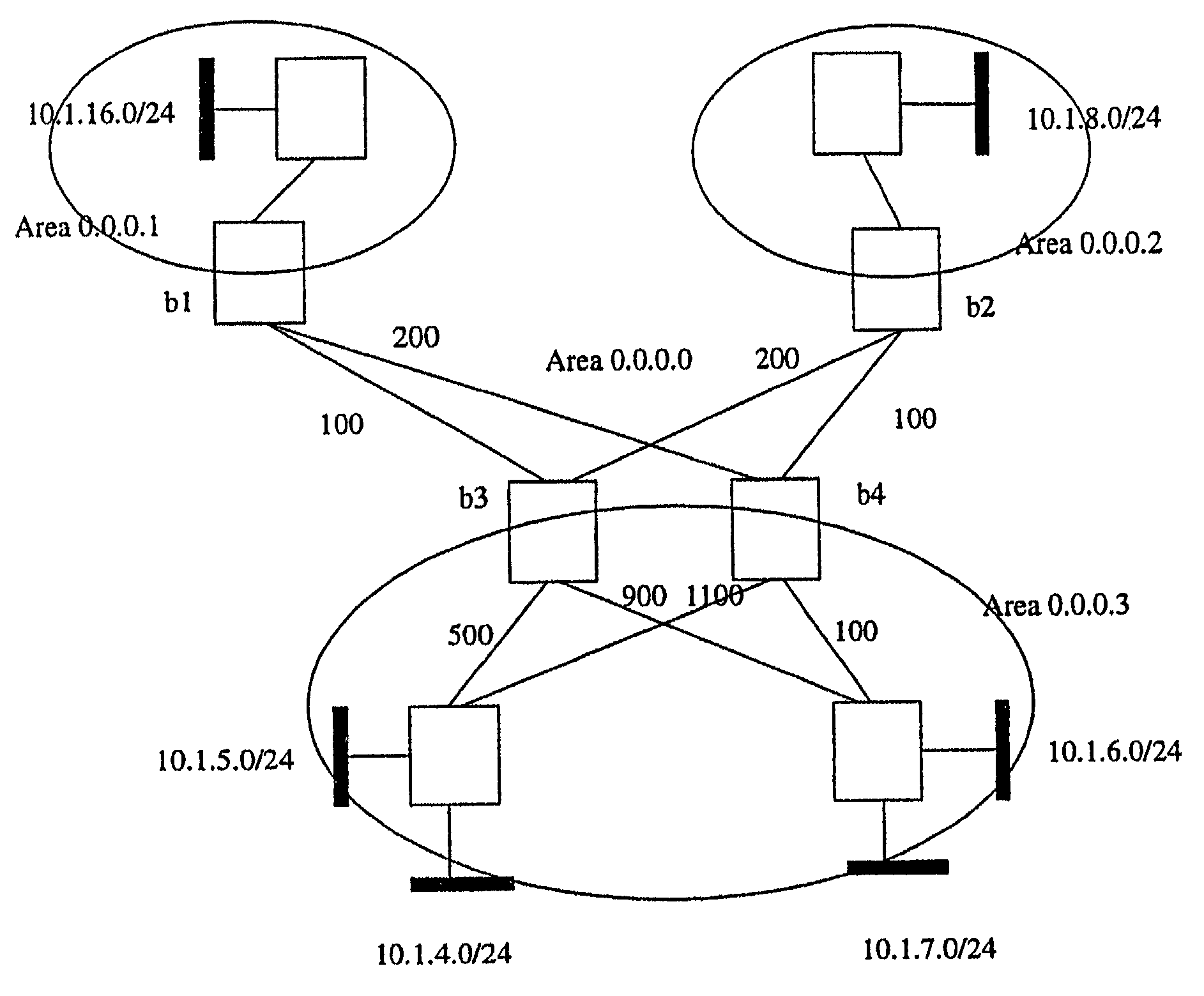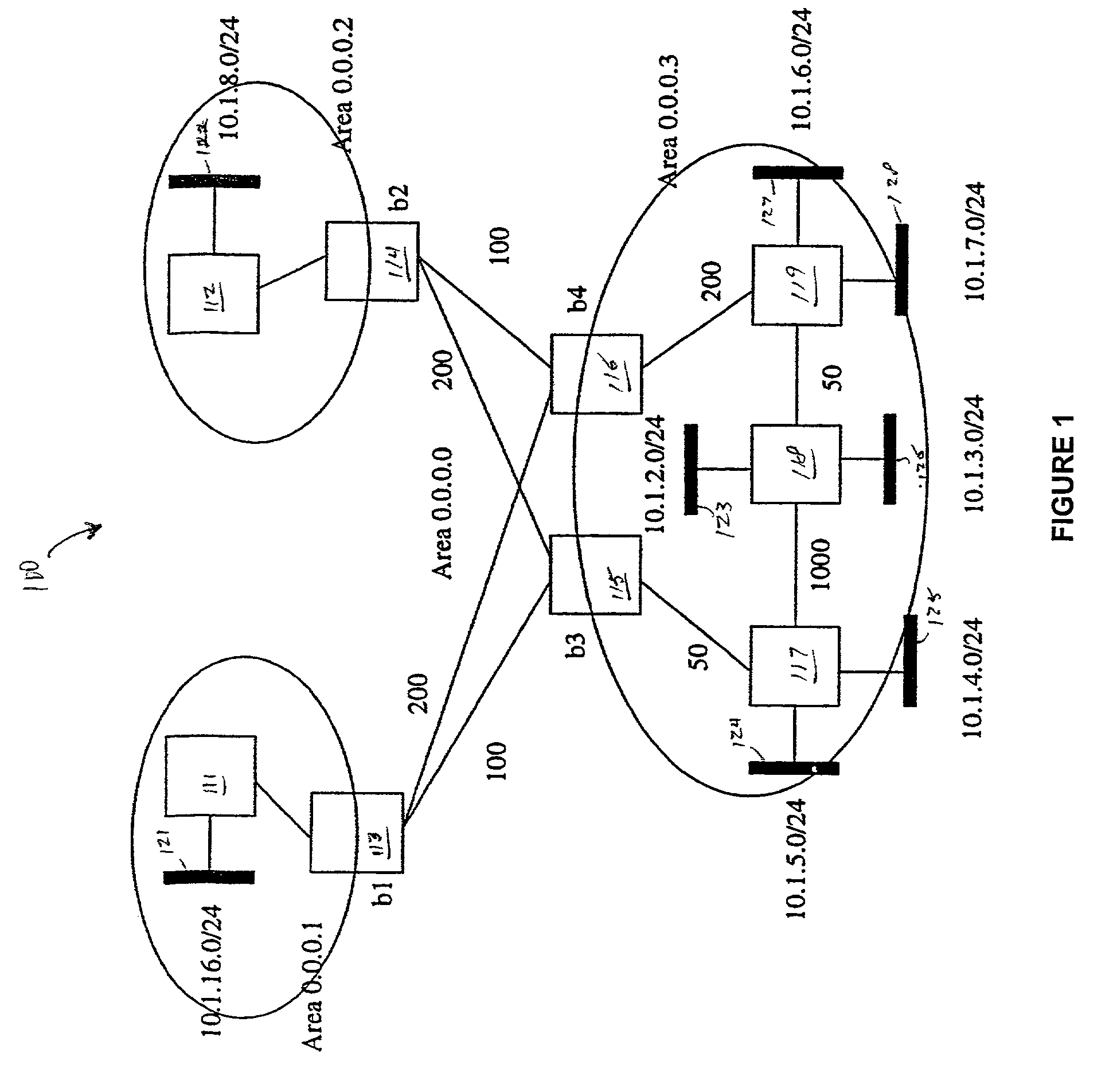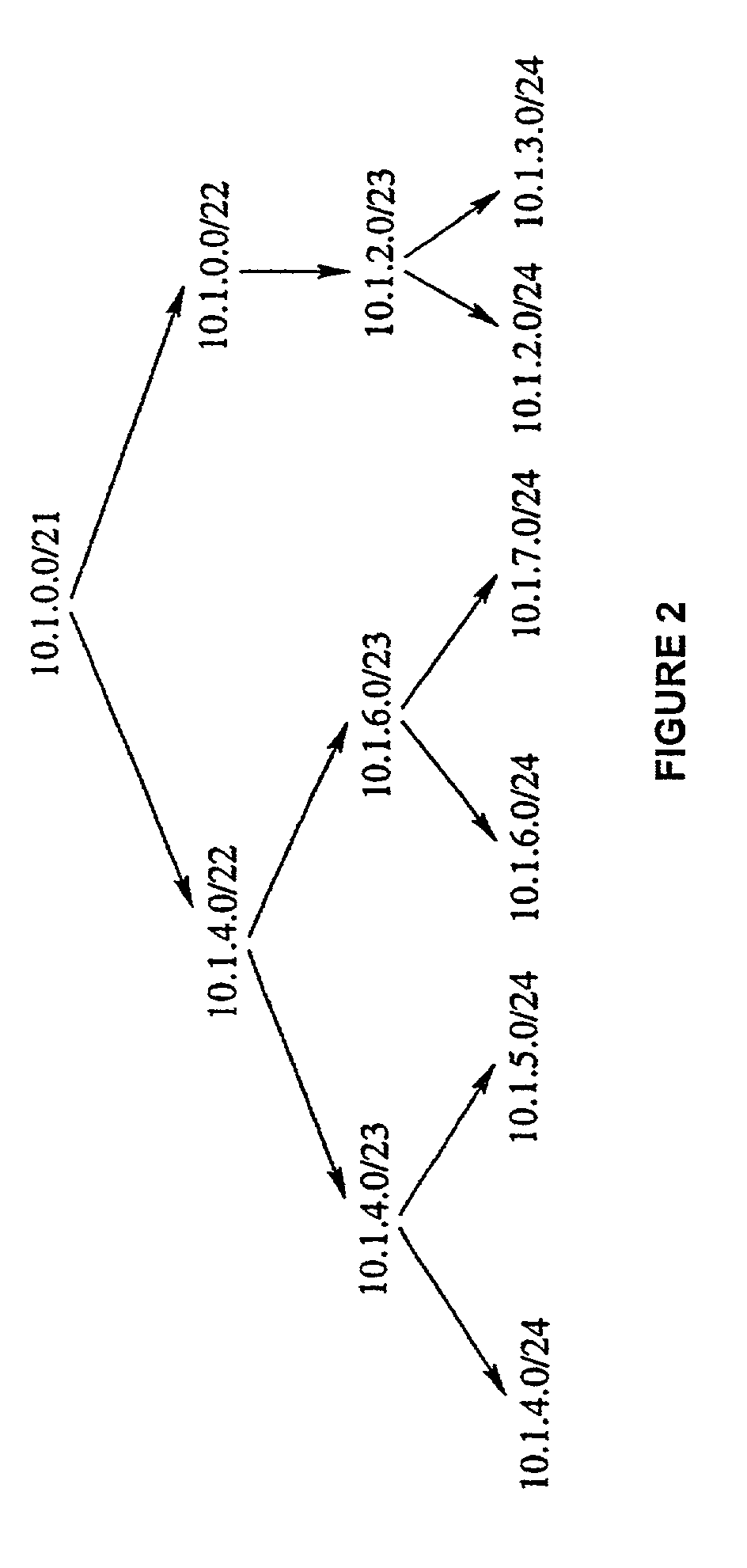System and method for optimizing open shortest path first aggregates and autonomous network domain incorporating the same
a technology of open shortest path and aggregates, applied in the field of network routing, can solve the problems of suboptimal routing, low traffic volume of ospf flooding traffic necessary to synchronize link-state databases, and insufficient detail of an area's topology
- Summary
- Abstract
- Description
- Claims
- Application Information
AI Technical Summary
Benefits of technology
Problems solved by technology
Method used
Image
Examples
Embodiment Construction
[0031]Referring initially to
[0032]The primary reason for suboptimal paths being selected when subnets are aggregated is that a single weight is used by each ABR for all the subnets in the aggregate. A single weight may be incapable of accurately capturing the distance of the border router to every subnet covered by the aggregate. The problem is further exacerbated when the subnets are spread across the area with some subnets being closer to one border router while others being closer to a different border router. This was precisely the case in the aforementioned example, where aggregate 10.1.4.0 / 22 spans subnets 10.1.5.0 / 24 (closer to b3) and 10.1.6.0 / 24 (closer to b4), the distance between whom is greater than 1000. As a result, a single weight advertized for aggregate 10.1.4.0 / 22 is not representative of the distance between a border router and subnets in 10.1.4.0 / 22.
[0033]One possible way to reduce the error due to the selection of suboptimal paths in the presence of aggregation ...
PUM
 Login to View More
Login to View More Abstract
Description
Claims
Application Information
 Login to View More
Login to View More - R&D
- Intellectual Property
- Life Sciences
- Materials
- Tech Scout
- Unparalleled Data Quality
- Higher Quality Content
- 60% Fewer Hallucinations
Browse by: Latest US Patents, China's latest patents, Technical Efficacy Thesaurus, Application Domain, Technology Topic, Popular Technical Reports.
© 2025 PatSnap. All rights reserved.Legal|Privacy policy|Modern Slavery Act Transparency Statement|Sitemap|About US| Contact US: help@patsnap.com



